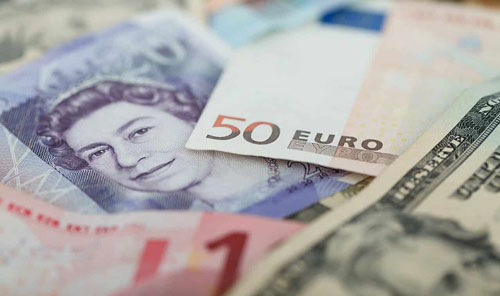Understanding the Euro
Advertisement
Triston Martin
Jan 28, 2024
The EU launched the Euro in 1999, and the physical euro coins and paper notes were launched in 2002. Its symbol "EUR" is the abbreviation for the Euro. It is the second-most traded currency around the globe, second only to that the US dollar. It is also the official currency of EU members adopting it, including Austria, Finland, Belgium, France, Greece, Germany, Ireland, Luxembourg, Italy, Netherlands, Spain, Portugal, Cyprus, Latvia, Estonia, Lithuania, Slovakia, Malta, and Slovenia. These countries comprise the eurozone, a group in which the Euro is the nation's currency. Furthermore, four additional non-EU countries (Andorra, Vatican City, San Marino, and Monaco) utilize euros as the currency of choice. Several nations have their currencies tied to the Euro.
The European Central Bank (ECB) is charged with two tasks of protecting the value of the Euro while maintaining the stability of prices in the European Union. The ECB and the central banks of national governments of all EU members, including states that have not yet accepted the Euro, come within the European System of Central Banks (ESCB) jurisdiction.
How the Euro Works
As with the dollar, the Euro is administered by one central bank, the European Central Bank (ECB). The fact that it is shared between 19 countries is a challenge for its management as each country has its fiscal policies that can affect the value of the Euro. At the beginning of the year 2021, countries owned 2.4 trillion euros, in euros, compared to $6.9 trillion worth of US dollar reserves. It is reported by the International Monetary Fund (IMF), which publishes this information each quarter in its COFER Table.
The Euro is divided into euro cents; every euro cent is one-hundredth of a Euro. The seven coins are EUR5, EUR10, EUR20, EUR50, EUR100, EUR200, and EUR500. Each coin and bill is an individual size. They also feature raised print, while distinct edges characterize coins. These features enable the visually impaired to differentiate the different denominations. The conversion from Euro to dollar reveals how many dollars the Euro can purchase at any moment, as determined by the current exchange rate. Foreign traders in the forex exchange market decide on exchange rates that change in a minute-by-minute manner depending on the way traders evaluate the risk against the benefits of keeping the currency. They base their decisions on a variety of variables. They consider the central bank's interest rates, the level of sovereign debt, and the strength of the nation's economy.

The Euro as a Reserve Currency
For several years, Dollars have been the most widely used reserve currency, which is the currency in which nations across the globe hold their foreign reserves of exchange. As of the end of 1997, 57% of the reserve, reserves of foreign exchange in the world were in dollars. The Deutsche mark made up 12.8 percent, and the French franc was 1.2 percent, while the yen was responsible for 4.9 percent of foreign exchange reserves.
Are any countries likely to transfer their reserves of official dollars to euros? The countries that connect their exchange rates with European currencies, such as using a currency board, floating or fixed peg, or managed floats--probably have Deutsche marks and different European foreign currencies as reserves. This is especially true for countries located in Eastern Europe, most of which have their currencies linked to the German mark as most of their business is with Germany. They'll likely have their reserves mostly in euros.
How quickly, if any time, will other nations change their reserves to Euro? Of the countries that fix their exchange rates in this manner, the majority do it with the dollar or the basket of currencies where the dollar has become the dominant currency. They are not likely to change to a larger scale. Additionally, most Latin American and Asian countries have more close trading relationships with the United States than Europe. They're likely to remain with the US dollar; however, they can gradually diversify their reserves. We can only confidently say that it is likely to be gradual if a switch of reserve funds from dollars to euros. Central banks across the globe are likely to avoid massive transactions in dollars or purchases of euros since they would be able to reduce the value of dollars.







